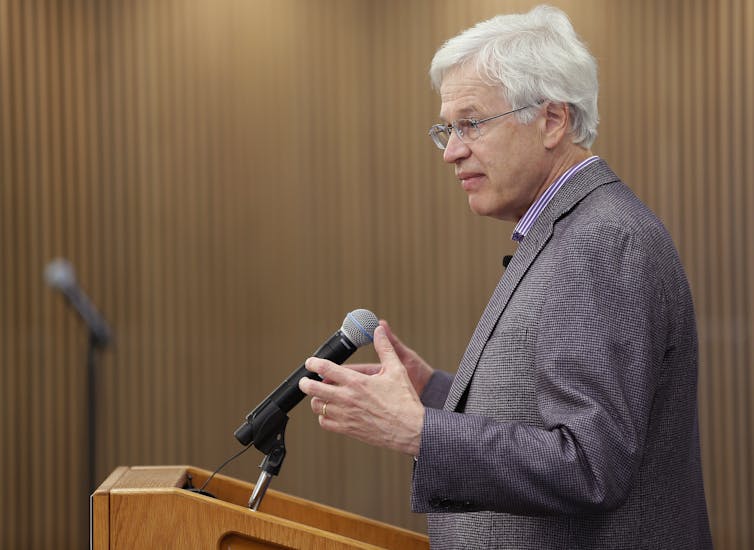One of the most notable evolutions in economic theory is the change in how we look at companies. No longer do we see a black box which uses some process or technology to turn inputs into outputs. These days we think of a business as a nexus of contracts among different stakeholders – shareholders, creditors, managers, workers, customers, suppliers and so on.
This evolution has led us to look at corporate governance through the design of contracts between those stakeholders. Oliver Hart and Bengt Holmström have laid the foundation to enable us to do that. The 2016 Nobel prize in Economics went some way to acknowledging this contribution.
While contracts are commonplace, they are generally not simple. They might be designed at times when the objectives of stakeholders differ (the so-called “agency problem”). For example, shareholders may want to maximise a company’s profits, while managers may want to build an empire through mergers and acquisitions.
There is also something called “asymmetric information”, where the actions of one set of stakeholders are not visible to other stakeholders in the company. Everyone can read the financial statements, but shareholders cannot directly see how much effort the managers put in to drive profits.
Shareholders can, however, enter into a contract with a company’s leaders that would give the managers an incentive to work in the interest of the shareholders. Pay can be linked to observable measures of a company’s performance. Similarly, shares and stock options may be included. In the Nobel citation, Holmström, a Finnish professor working at the Massachusetts Institute of Technology, was credited with demonstrating how shareholders should design an optimal contract for a CEO whose actions they would not be able to fully monitor.

Contracts can also be incomplete. It is either not possible or too expensive to write contracts that take into account all possible future outcomes. It is precisely the incompleteness of contracts that provides a rationale for corporate governance. This follows from research carried out by Hart, a British professor working at Harvard.
Hart of the matter
Consider, for example, a simple executive pay scheme in a company where shareholders own the company but control lies with the management. The relationship offers both an agency problem and asymmetric information. As mentioned earlier, one option for shareholders would be to write a contract that links the compensation of the managers to an observable outcome such as revenue or profit.
But profits can be affected by factors out of a manager’s control, and a contract that takes into account all combinations of managerial effort and external factors is impractical. Managers generally act in groups and so it may also prove difficult to assign an outcome to one person. You can write contracts that penalise the group if a product fails or a plant proves inefficient, of course, but Holmström argued that uncertainty about the causes of such failures would mean that monitoring would be necessary and hence the associated costs are unavoidable.

You could judge the performance of managers against that of their peers to decide compensation (a supermarket CEO might cheer that sales are up 10%; shareholders less so if other stores are up 12%). But this approach would still only work if you can successfully remove the influence of common external factors affecting how managers perform.
In this case, where simple contracts may not be easy to design or enforce, we need a mechanism – corporate governance – that ensures that the interests of non-managerial stakeholders are not undermined. Hart views corporate governance as a mechanism to allocate rights to control a company’s non-human assets among the stakeholders.
Credit due
An interesting implication of this perspective on corporate governance is a rationale for debt. Suppose the shareholders of a firm are mainly interested in short-term profits, while managers prefer grandiose empire building that brings private perks and benefits. Any contract that attempts to address this conflict is likely to be incomplete, unable to account for every influence over the company’s future profits.
This opens up the possibility of a significant dispute between the shareholders and the managers about the latter’s compensation. Managers might claim low profits came despite their best efforts, rather than because of their poor efforts or judgement.
How can debt help in this case? A debt contract can enable the creditor to enforce liquidation of a firm if it cannot meet its repayment obligations. If the firm performs well and can meet these obligations, control over the assets of the company remains with the managers. If, on the other hand, the company performs poorly and cannot repay the creditors then it can be liquidated. At the time of liquidation, after the creditors have been repaid, the residual (or remaining) rights over the company’s assets are with the shareholders – the managers have no rights over these assets any more.
In other words, where contracts between shareholders and managers are incomplete, debt taken on for whatever reason can force an alignment of objectives. In the words of Hart and Sanford J Grossman: “managers can avoid losing their positions only by being more productive.” Productive managers are precisely what shareholders want. A company’s capital structure can, therefore, be used to both discipline managers and give outsiders (creditors) an incentive to enforce the discipline. Hart and Grossman also examined how control is exerted in work on voting rights.
Holmström and Hart do not provide all the answers to resolve the problems associated with weak corporate governance. They do, however, induce us to think about a firm as a microcosm of the society in which we live, where stakeholders with different objectives compete for power and control. Their work has helped us to move away from one-size-fit-all rules about things such as financial structure and pay and has led us to focus on making contracts and mechanisms that work. That is a transforming contribution to corporate governance research.

